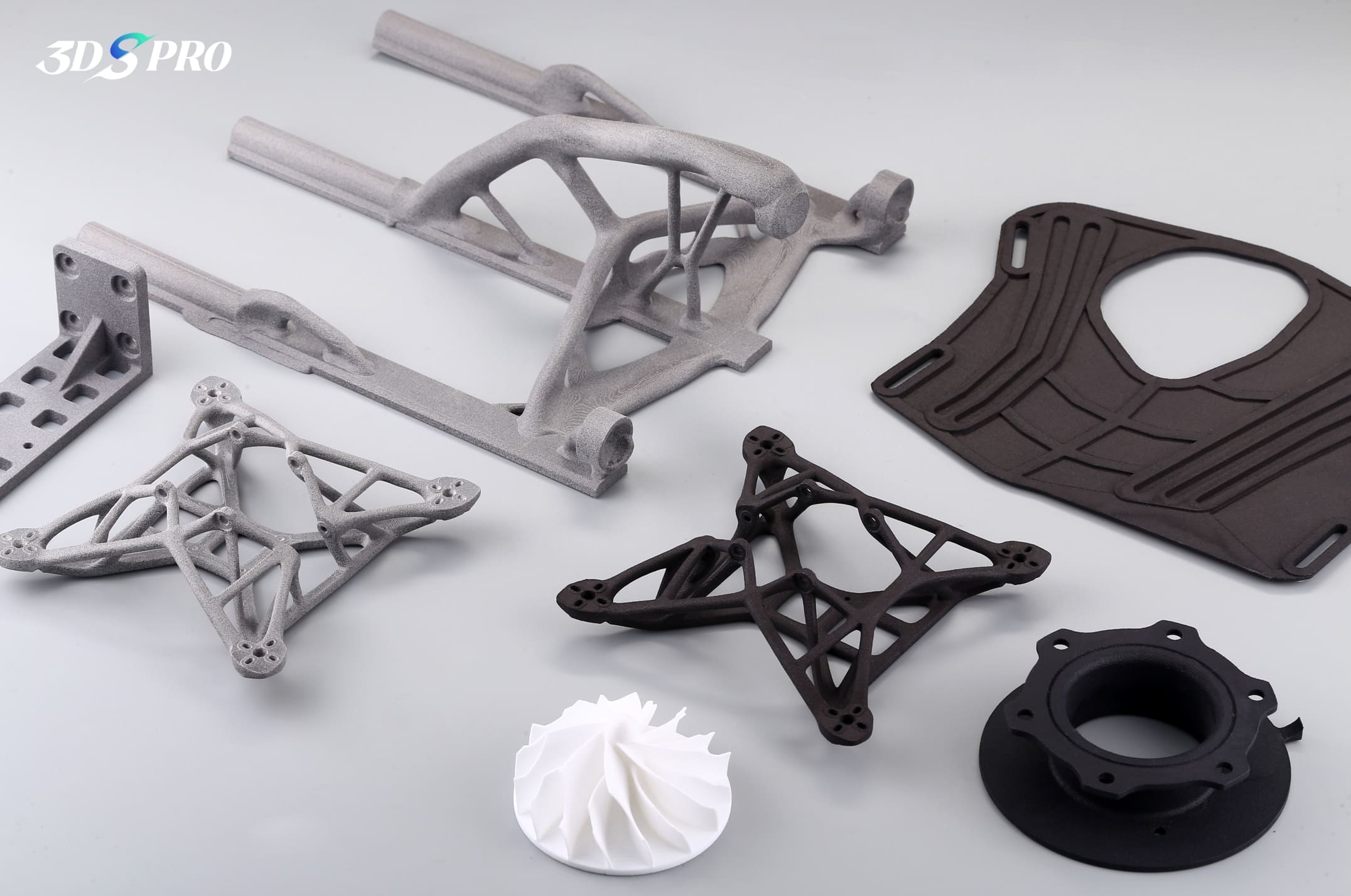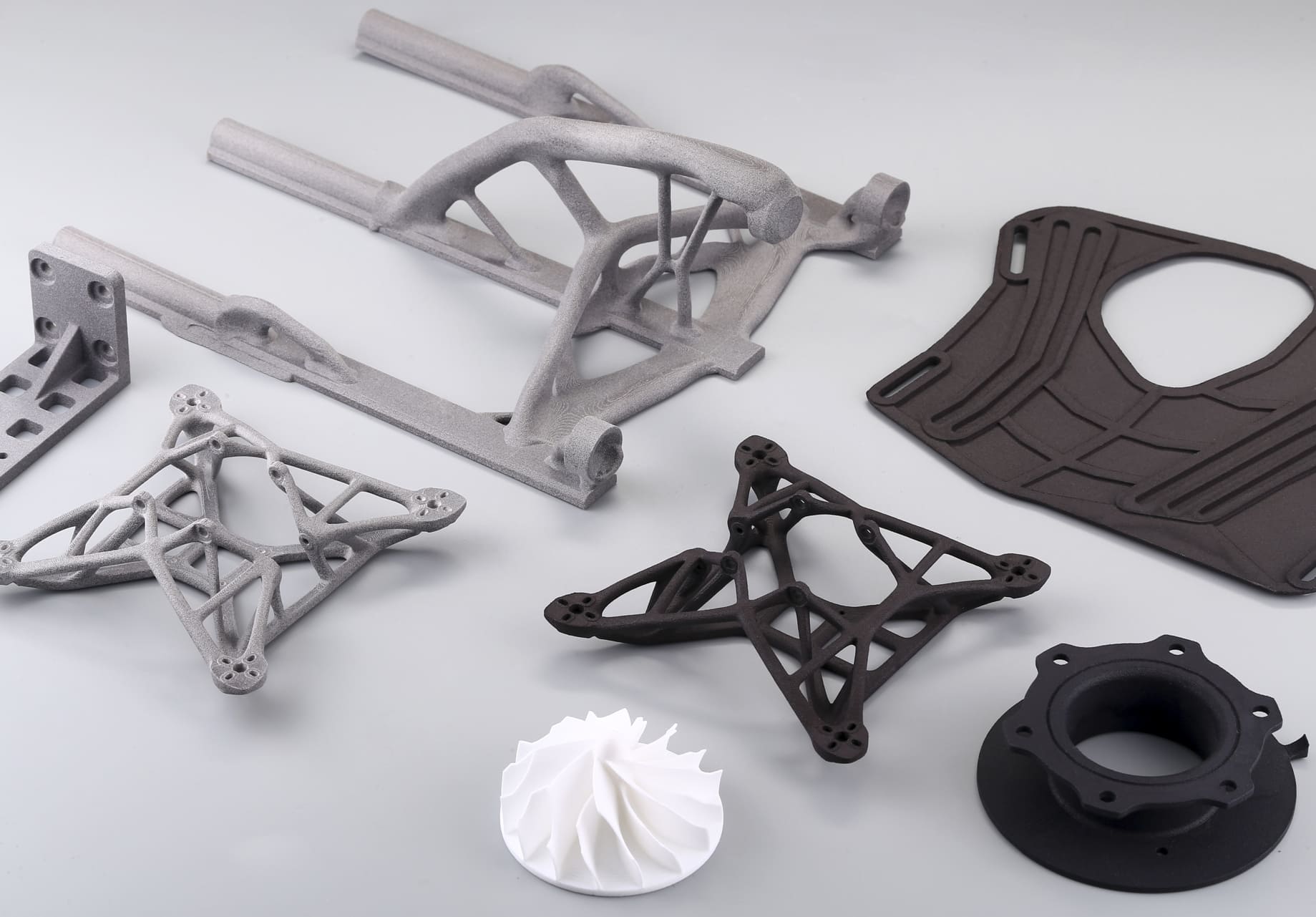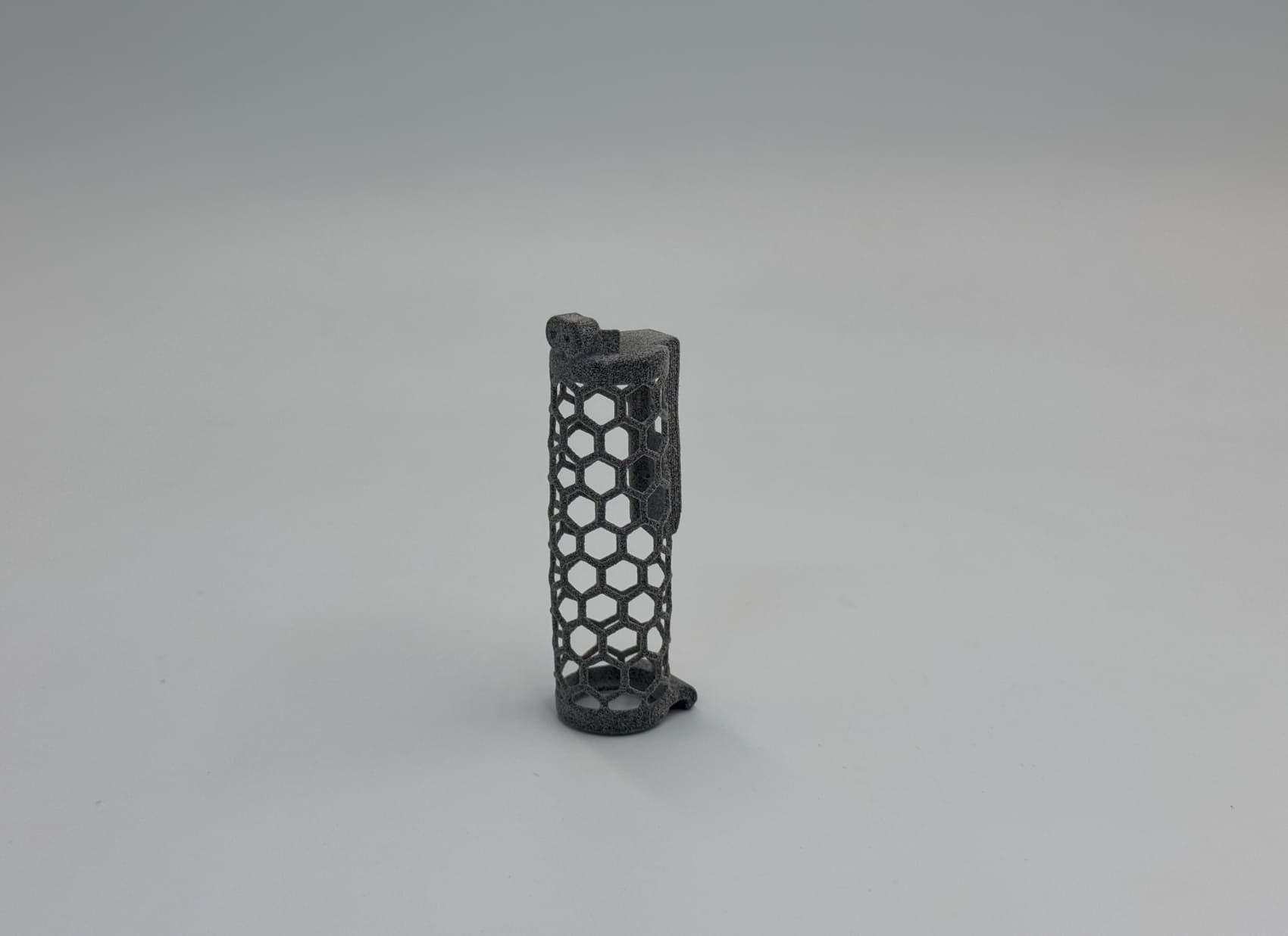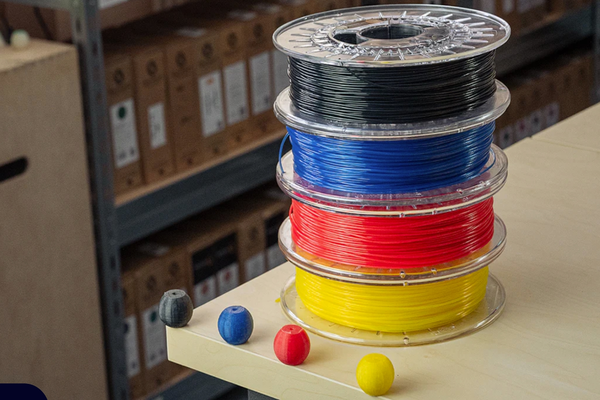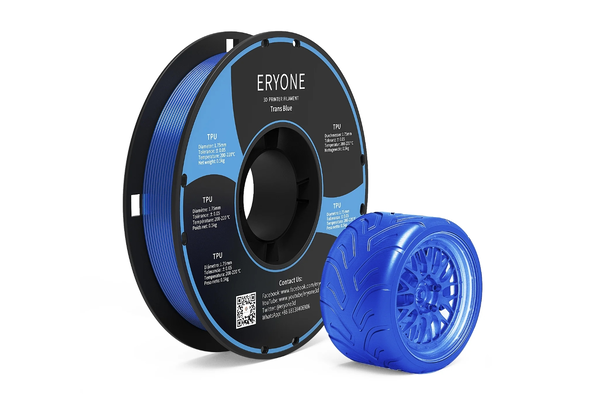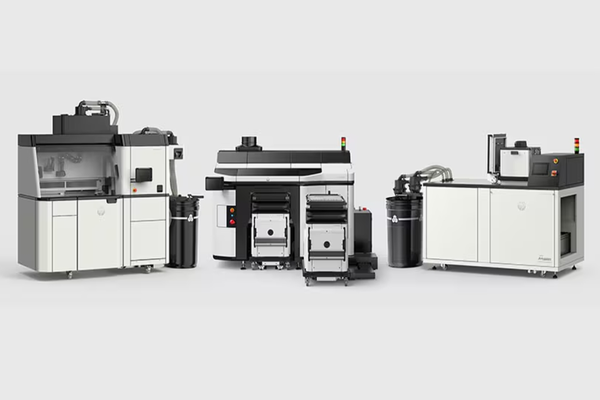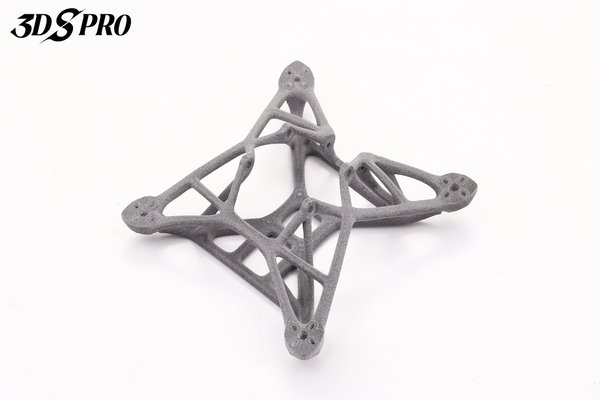Can you 3D print flexible parts?
Flexible 3D printing, often referred to as soft or rubber-like printing, leverages unique materials known as thermoplastic elastomers (TPEs). These materials combine the elastic properties of rubbers with the processability of thermoplastics. Among the most popular flexible 3D printing materials are Thermoplastic Polyurethane (TPU) and Thermoplastic Copolyester (TPC), which offer varying degrees of flexibility, durability, and ease of use.
The applications of flexible 3D printed parts are vast and varied. From industrial gaskets that seal and absorb shocks to medical models that mimic human tissue to wearable technology that conforms comfortably to the body.
However, printing with flexible materials has challenges. It requires a keen understanding of the printer’s capabilities, the filament’s properties, and the intricacies of the printing process. Factors such as extruder type, print speed, temperature settings, and bed adhesion must be meticulously managed to ensure success. As we explore flexible 3D printing in this article, we’ll learn about its materials, techniques, and innovations that make it all possible.
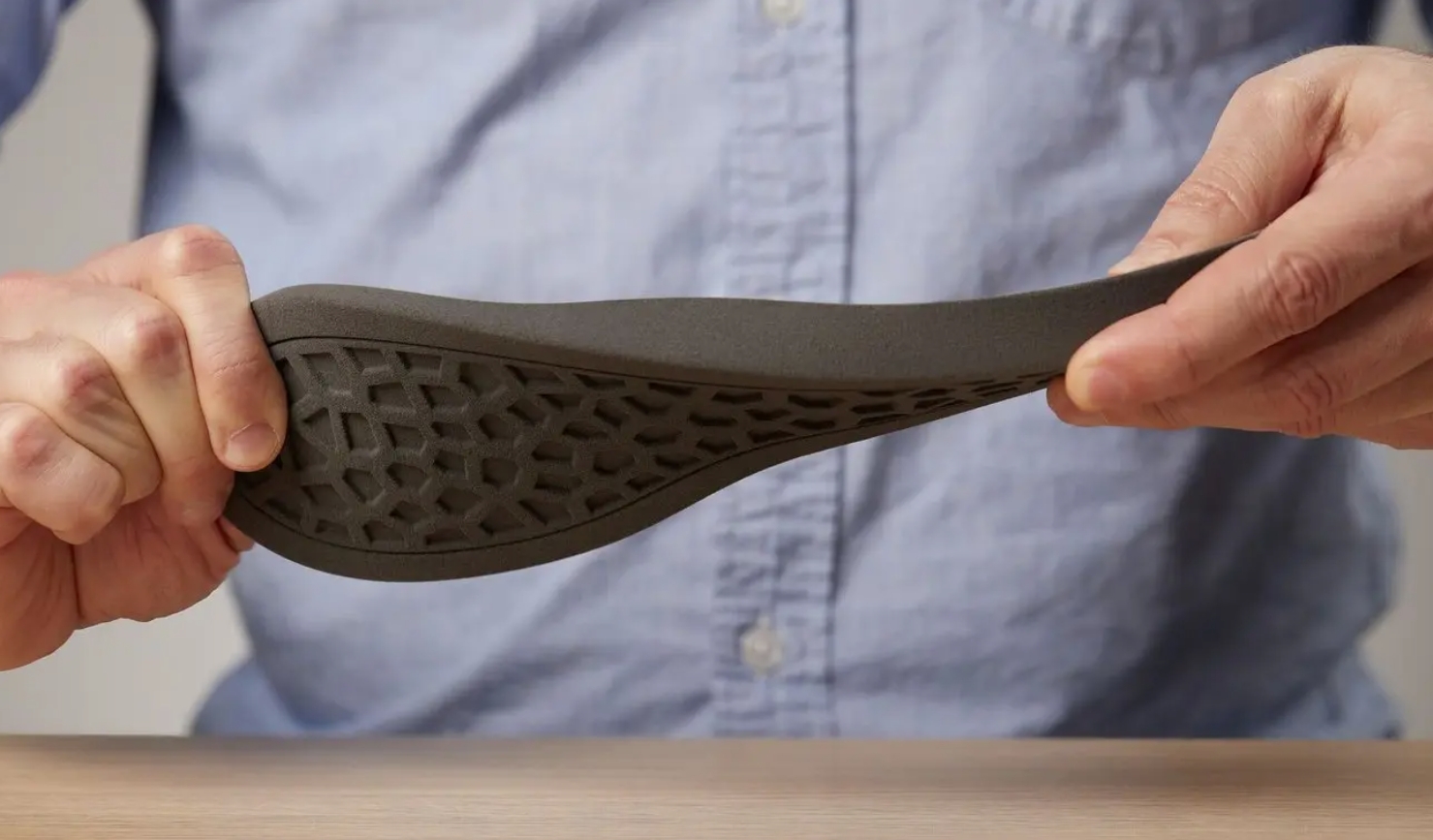
Image Source: Formlabs
3D Printing Technologies to Make Flex Parts
1. Fused Deposition Modeling (FDM)
Resolution & Accuracy
FDM printers are capable of fine resolutions that can go as low as 0.1 mm (100 microns), which is crucial for capturing the intricate details of flexible parts. The accuracy of an FDM printer in rendering flexible parts is largely dependent on the calibration of the machine and the quality of the filament used. Precise control over the movement of the extruder head ensures that each layer adheres correctly to the previous one, maintaining the part’s intended dimensions and functionality.
Surface Finish
The surface finish of FDM printed flexible parts is inherently textured. However, post-processing techniques such as sanding, chemical smoothing, or using finer nozzle diameters can enhance the smoothness of the final product. Post-processing is particularly important for FDM made flexible parts that may come into contact with skin or require a high-quality aesthetic.
Materials
Flexible filaments like TPU, TPC, and soft PLA offer a spectrum of flexibility, from soft and stretchable to firm yet bendable. These materials exhibit excellent layer adhesion and can withstand repetitive stress.
Applications
In the medical field, FDM can create prosthetics and organ models that mimic the softness of human tissue. In consumer products, it’s used for phone cases, footwear, and other wearables that require comfort and flexibility. In the industrial sector, FDM shines in producing custom gaskets, hoses, and seals that can endure dynamic environments.
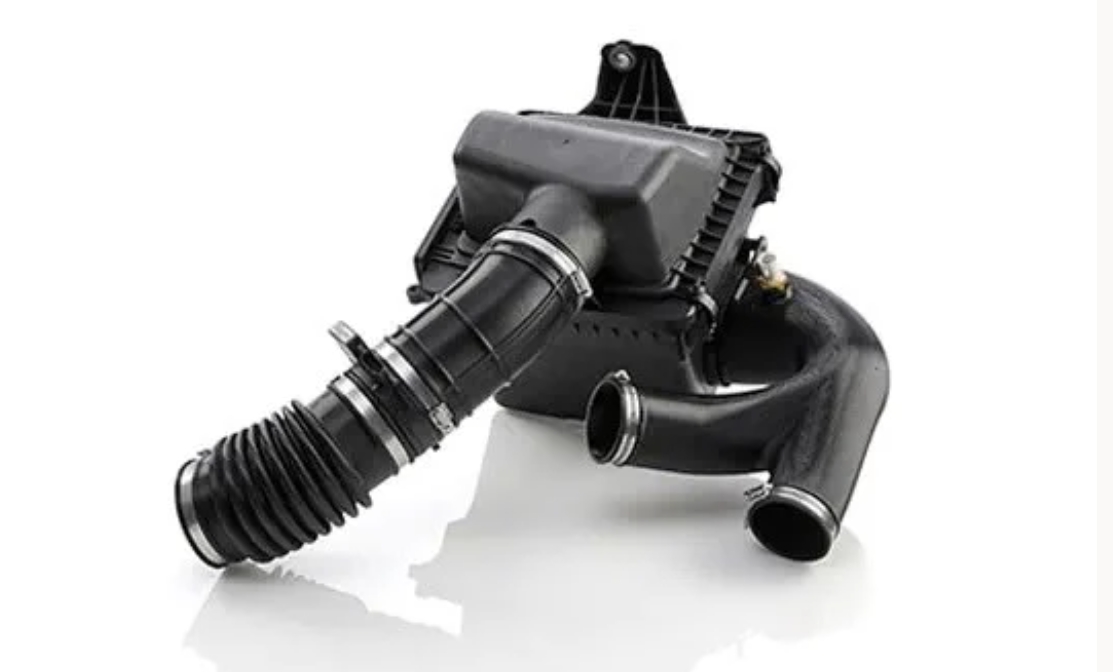
Image Source: Stratasys
2. Stereolithography (SLA)
Resolution & Accuracy
SLA printers are known for their exceptional resolution and accuracy, often down to 0.05 mm (50 microns), which allows for the creation of flexible parts with intricate details and smooth curves that are closer to the final product’s intended design.
Surface Finish
The surface finish of SLA prints is superior to that of FDM, providing a smooth and detailed appearance that requires minimal post-processing. SLA printed parts are ideal for applications where aesthetics are as important as functionality.
Materials
SLA can print flexible resins that simulate the properties of rubber or TPE. These resins can produce parts that are pliable and bendable, suitable for a range of flexible applications.
Applications
SLA 3D printed flex parts are perfect for applications like medical models that require the mimicry of soft tissues, custom-fit wearables, and prototypes that need to demonstrate functionality and form. SLA is also used in the dental industry for creating flexible molds and in the consumer goods sector for products like ergonomic grips.

Image Source: Formlabs
2. Selective Laser Melting (SLS)
Resolution & Accuracy
SLS printers are known for their high resolution and accuracy, typically around 0.1 mm (100 microns), which allows for the creation of parts with complex geometries and fine details. The accuracy of SLS is particularly beneficial for functional parts that must fit together with other components or systems.
Surface Finish
The surface finish of SLS parts is slightly grainy due to the nature of the powder used. However, this can be advantageous for certain applications where a textured grip is desired. Post-processing methods like sandblasting can be employed to smooth the surface if necessary.
Materials
SLS technology uses a variety of powders, including flexible materials such as polyamide (nylon) and TPU. These materials produce parts that are strong yet flexible, capable of withstanding significant mechanical stress and repeated use.
Applications
SLS is ideal for producing functional prototypes, end-use parts, and complex assemblies that require flexibility and strength. It’s widely used in automotive, aerospace, and consumer goods industries for components like hinges, snap-fits, and other flexible joints. In the medical sector, SLS is used for creating custom orthopedic devices and prosthetics that need to conform to the human body.
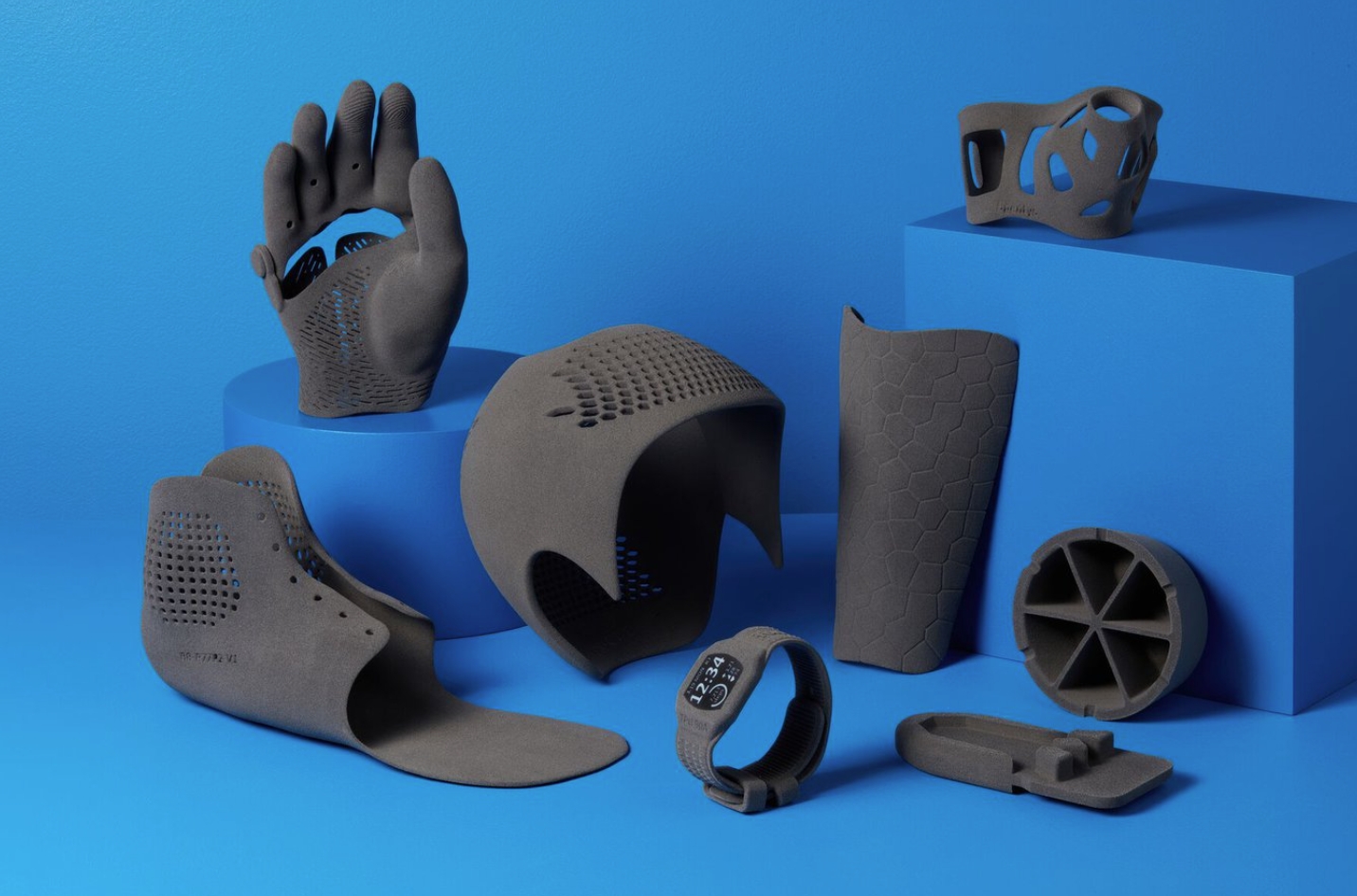
Image Source: Formlabs
4. Multi Jet Fusion (MJF)
Resolution & Accuracy
MJF is renowned for its high resolution and dimensional accuracy, which can be as precise as 0.08 mm (80 microns), which allows for the creation of flexible parts with intricate details and tight tolerances, essential for functional components that need to fit precisely within assemblies or mechanisms.
Surface Finish
The surface finish of MJF parts is typically smoother than SLS, with a fine-grain texture that is often desirable in the final product. The parts require little to no post-processing, which is a significant advantage for manufacturers looking to reduce production time and costs.
Materials
MJF technology utilizes a range of thermoplastic powders, including flexible powder like TPU, which offers excellent flexibility and durability. The parts produced are not only flexible but also have a high degree of strength and thermal resistance, making them suitable for a wide array of applications.
Applications
MJF is particularly well-suited for producing functional prototypes and end-use parts that require flexibility, such as complex hinges, snap-fits, and soft-touch surfaces. Its ability to produce parts with consistent mechanical properties and fine detail makes it a popular choice in the automotive, aerospace, and consumer goods industries.
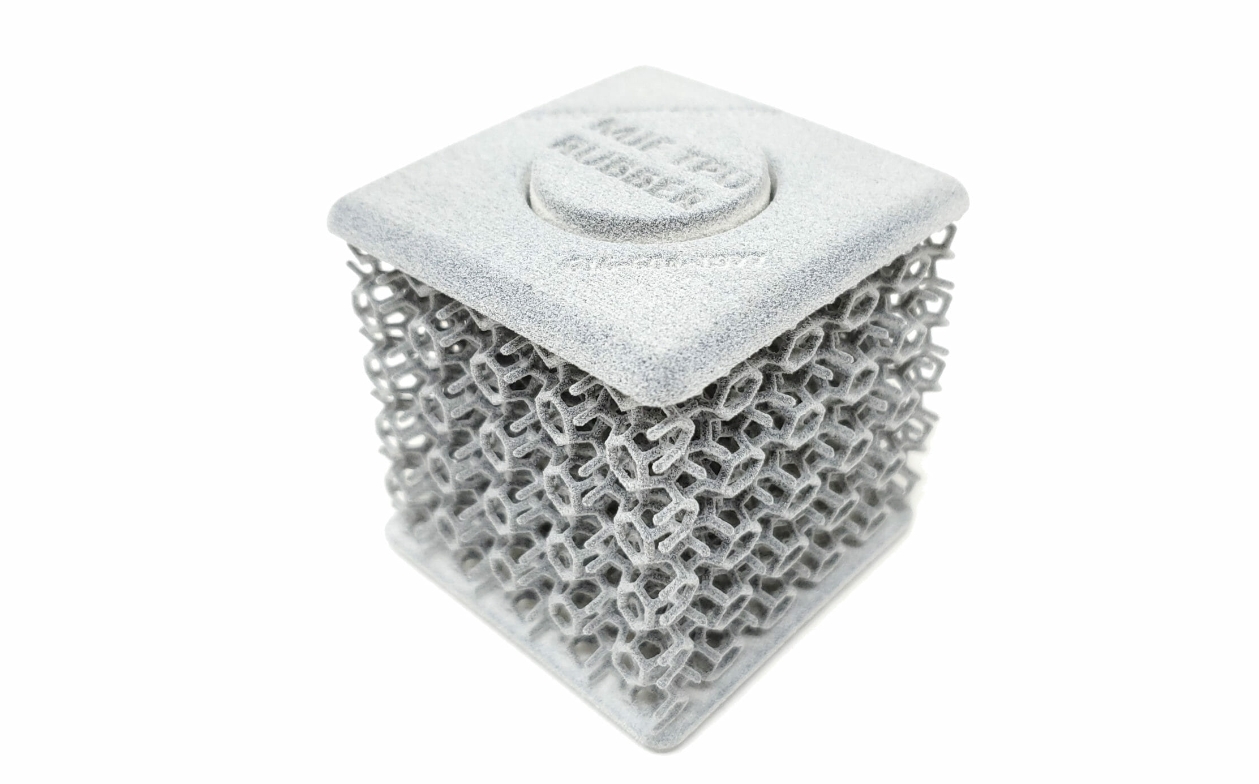
Image Source: Forerunner 3D Printing
Flexible Materials for 3D Printing
3D Printing Flexible Filaments (FDM)
1. TPU Filaments
● Shore Hardness: Typically between Shore 60A to 95A.
● Properties: TPU offers a balance of flexibility and toughness, making it suitable for parts that need to bend or compress under force.
TPU is the most widely used flexible filament in FDM. It’s prized for its flexibility, durability, and resistance to oils and greases. With shore hardness ratings ranging from soft to semi-rigid, TPU can be used to print everything from phone cases to automotive parts.
2. TPE Filaments
● Shore Hardness: Ranges from Shore 20A to 90A.
● Properties: TPEs are incredibly flexible and can stretch significantly before returning to their original shape.
TPE filaments are a class of polymers that combine the mechanical properties of rubber with the processing advantages of thermoplastics. TPEs are known for their elasticity and ability to return to their original shape after being stretched or compressed.
3. TPC Filaments
● Shore Hardness: Usually falls within Shore 40D to 72D.
● Properties: TPC is less flexible than TPU but provides higher impact resistance and temperature tolerance.
TPC filaments offer a good balance between flexibility and strength. They are less elastic than TPU but provide better heat resistance and toughness. TPC is suitable for parts that require a combination of flexibility and structural integrity, such as living hinges or snap-fit assemblies.
4. Soft PLA Filaments
● Shore Hardness: Close to Shore 60D.
● Properties: Soft PLA is more flexible than regular PLA, suitable for objects that need to withstand light bending.
Soft PLA, or Flexible PLA, is a modified version of polylactic acid that maintains the ease of printing associated with PLA but adds a level of flexibility. It’s less brittle and can be bent or twisted without breaking, making it suitable for parts that require a slight flex.
5. PEBA Filaments
● Shore Hardness: Ranges widely from Shore 70A to 90A.
● Properties: PEBA is known for its rubber-like feel and high elasticity, perfect for parts that require extensive stretching.
PEBA is known for its rubber-like properties and high elasticity. It’s a high-performance thermoplastic elastomer that’s resistant to abrasion and has good impact strength. PEBA is ideal for creating parts that need to withstand repetitive stress, such as sports equipment or automotive components.
6. TPA Filaments
● Shore Hardness: Generally around Shore 85A.
● Properties: TPA is durable and flexible, with good resistance to wear and tear.
TPA is a flexible filament that offers excellent layer bonding and a smooth finish. It’s a great choice for objects that need to be durable yet flexible, such as protective casings or seals.
8. TPS Filaments
● Shore Hardness: Varies from Shore 30A to 90A.
● Properties: TPS offers a wide range of flexibility, making it versatile for various applications that require different levels of softness.
TPS, or Styrenic Block Copolymers, are a family of thermoplastic elastomers that combine the mechanical properties of styrene with the elasticity of rubber. TPS filaments are versatile and can be used for a wide range of applications that require varying degrees of flexibility and toughness.
Printing Considerations
Printing with flexible filaments requires special attention to printer settings. A slower print speed, higher extruder temperature, and a well-calibrated extruder capable of handling flexible materials are crucial for achieving optimal results.
3D Printing Flexible Resins (SLA/DLP)
1. Standard Flexible Resin
● Shore Hardness: Typically around Shore 50A to 70A.
● Properties: Balances flexibility with strength, ideal for parts that need to bend or compress while maintaining form.
Standard flexible resin is the go-to choice for those who are looking to strike a perfect balance between flexibility and strength. With a Shore Hardness typically around 50A to 70A, it’s versatile enough to be used in a variety of applications, from industrial prototypes to consumer goods.
2. Tough Flexible Resin
● Shore Hardness: Generally between Shore 60A to 80A.
● Properties: Offers enhanced impact resistance and durability, suitable for protective cases and enclosures.
Tough flexible resin takes durability to the next level. Designed to withstand high stress and impact, this resin, with a Shore Hardness of 60A to 80A, is ideal for creating parts that not only need to flex but also endure rigorous use.
3. Elastic Resin
● Shore Hardness: Ranges from Shore 30A to 50A.
● Properties: Highly elastic, capable of stretching significantly without tearing, perfect for wearables and medical devices.
With an impressive Shore Hardness range from 30A to 50A, the elastic resin can stretch up to 2.5 times its original length, making it perfect for applications that demand extreme elasticity, such as wearables, medical models, and dynamic hinges or joints.
4. Biocompatible Resins
● Shore Hardness: Varies, but often designed to be within the range of human tissue, from Shore 20A to 80A.
● Properties: These resins are formulated to be safe for human contact, making them suitable for medical devices and implants that require direct skin or tissue contact. They are rigorously tested to meet healthcare regulations.
Biocompatible Resins are specially formulated for applications that require direct contact with the human body. These resins meet stringent safety standards and come in various Shore Hardness levels to match the flexibility of human tissue, from 20A to 80A. They are the materials of choice for medical device prototypes, dental applications, and any product that requires biocompatibility.
Printing Considerations
Optimal results are obtained by fine-tuning the curing times, layer heights, and post-curing processes to match the specific resin’s properties.
3D Printing Flexible Powders (SLS/MJF)
1. TPU Powders
● Shore Hardness: Ranges from Shore 90-95A
● Properties: TPU powders enable the creation of parts that are flexible and can endure significant deformation before returning to their original form. Parts made from TPU powders are known for their resistance to abrasion and chemicals and ability to withstand high friction environments.
Thermoplastic Polyurethane (TPU) powders are a versatile and innovative material used in 3D printing, particularly with Selective Laser Sintering (SLS) and Multi Jet Fusion (MJF) technologies. TPU is a type of thermoplastic elastomer (TPE) that exhibits both the high durability of plastics and the elasticity of rubber, making it an ideal choice for applications requiring materials that can be repeatedly bent or compressed without losing their shape.
2. TPE Powders
● Shore Hardness: Ranges from Shore 40A-90A
● Properties: TPE powders enable the creation of parts that are not only flexible but can also endure significant deformation and return to their original shape, much like rubber.
Objects printed from TPE powders are known for their high impact resistance and ability to withstand wear and tear, making them suitable for functional parts in demanding environments. TPE powders are used to create flexible automotive parts such as seals, gaskets, and hoses that need to withstand vibration and temperature variations. Besides, TPE is ideal for items requiring a soft touch, like grips on tools, sports equipment, and protective cases for electronics.
Which 3D printing material is most flexible?
The most flexible 3D printing material available is Thermoplastic Polyurethane (TPU). TPU is renowned for its impressive elasticity and high abrasion resistance, which allows it to combine the properties of rubber with those of hard plastic. Its ability to be stretched and flexed easily without losing its original shape or durability makes it the material of choice for applications that require the highest degree of flexibility.
3D Printing Flexible Parts at 3DSPRO
At 3DSPRO, we specialize in creating flexible parts using advanced 3D printing technologies. Our SLS and MJF 3D printing solutions offer a material choice of TPU powders.
Deciding whether to use SLS or MJF for your TPU parts depends on several factors, including the desired mechanical properties, detail resolution, and production volume. At 3DSPRO, we can guide you through the selection process to ensure the best fit for your specific needs.
For more detailed information on TPU properties and the capabilities of our SLS and MJF 3D printing services, please upload your 3D models to check or contact our team at success@3dspro.com. We’re here to help you create high-quality flexible 3D prints.
